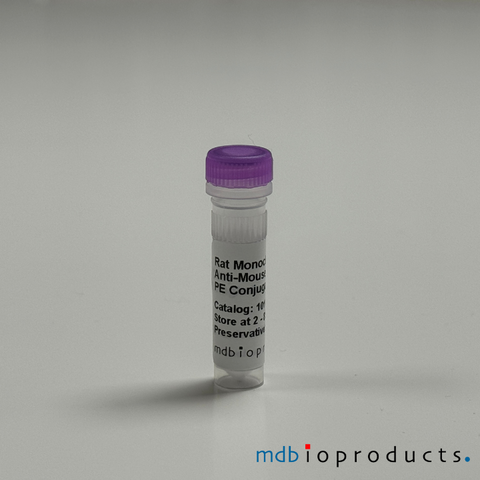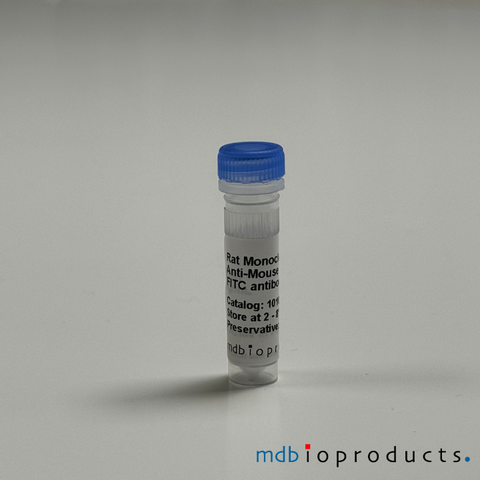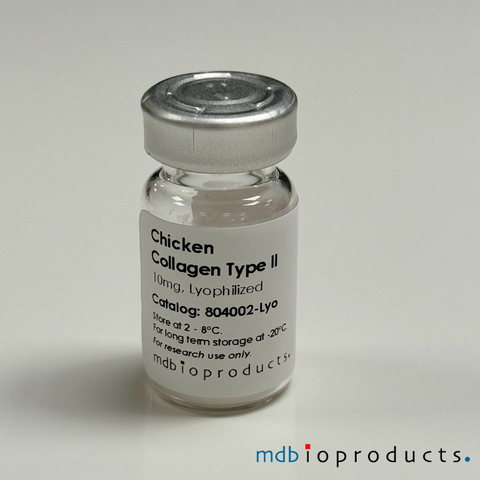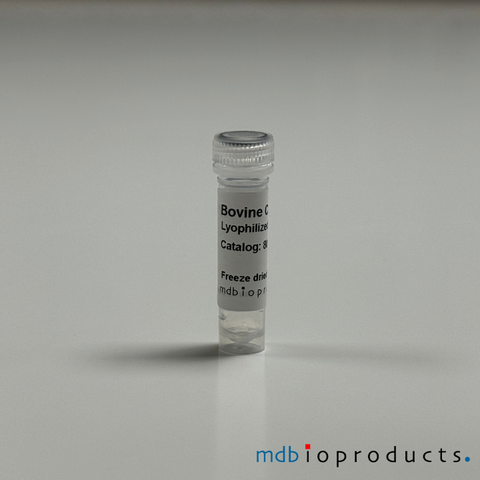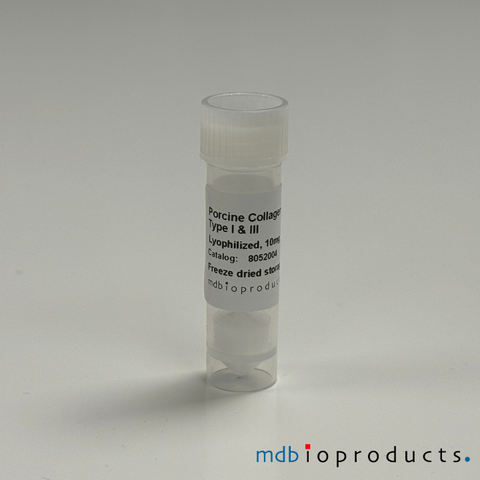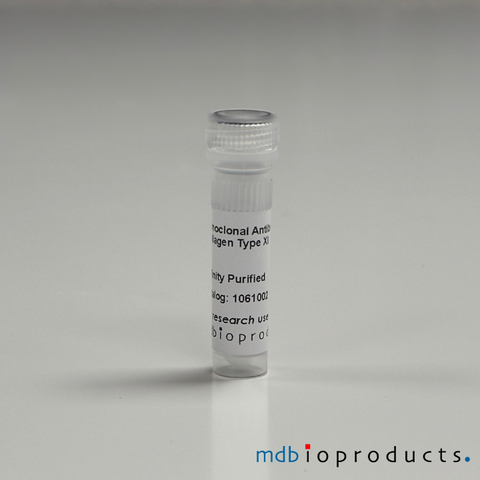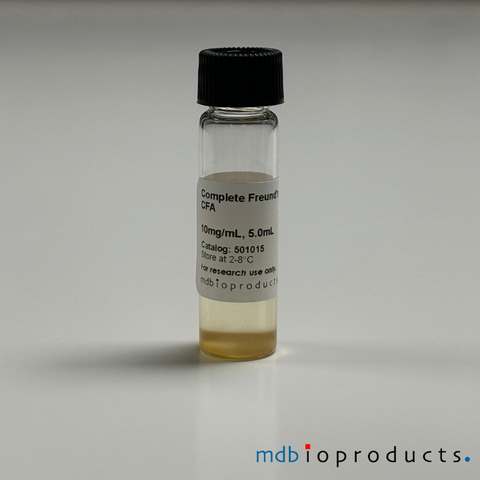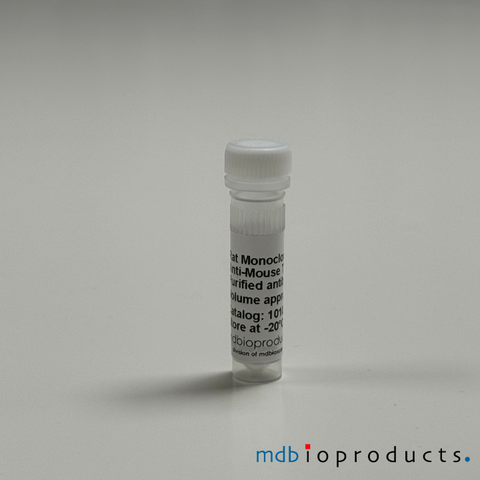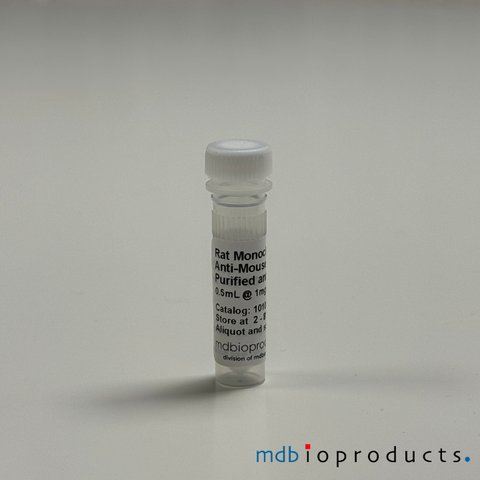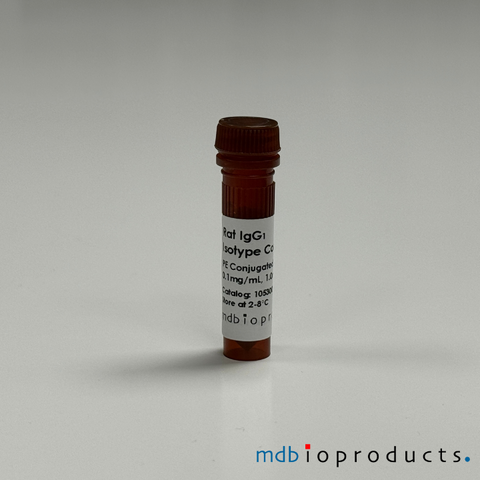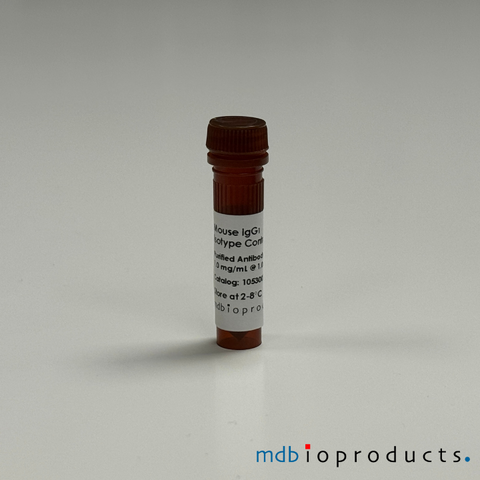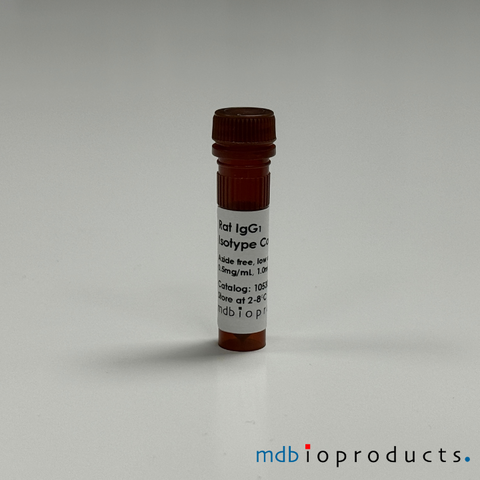T1/ST2 (IL-33 R) Mouse, Monoclonal Antibody, Biotinylated, 0.5 mL
Mouse T1/ST2 (IL-33 R) biotinylated monoclonal antibody (Clone: DJ8, Host / Isotype Subclass: Rat IgG1, light chain not isotyped) for the identification and purification of murine T helper 2 (Th2) cells...
Antibodies
101001B
Mouse T1/ST2 (IL-33 R) biotinylated monoclonal antibody (Clone: DJ8, Host / Isotype Subclass: Rat IgG1, light chain not isotyped) for the identification and purification of murine T helper 2 (Th2) cells and all forms of murine mast cells.
T1/ST2 (also known as IL-1 R4 or IL-33Ra) is a transmembrane glycoprotein expressed on mast cells and Th2 cells. It is a selective marker for murine Th2 lymphocytes and plays a role in regulating inflammatory responses. IL-33 is a recently identified member of the IL-1 family of cytokines and is involved in Th2 mediated immune responses. IL-33 mediates its biological effects via T1/ST2 binding. The roles of IL-33 and T1/ST2 (IL-33Ra) have been investigated in many immune responses such as allergy, asthma, rheumatoid arthritis and osteoarthritis.
References/Citations:
Yan, C., Kuang, W., Ma, G., Guo, F., Jin, L., Wan, H., ... & Wang, L. (2025). E3 ligase RNF128 restricts A. alternata-induced ILC2 activation and type 2 immune response in the murine lung. Scientific Reports, 15(1), 1193.
Schmitt, P., Duval, A., Camus, M., Lefrançais, E., Roga, S., Dedieu, C., Ortega, N., Bellard, E., Mirey, E., Mouton-Barbosa, E., Burlet-Schiltz, O., Gonzalez-de-Peredo, A., Cayrol, C., & Girard, J. P. (2024). TL1A is an epithelial alarmin that cooperates with IL-33 for initiation of allergic airway inflammation. The Journal of experimental medicine, 221(6), e20231236. https://doi.org/10.1084/jem.20231236
Gupta, A., Lee, K., & Oh, K. (2023). mTORC1 Deficiency Prevents the Development of MC903-Induced Atopic Dermatitis through the Downregulation of Type 2 Inflammation. International journal of molecular sciences, 24(6), 5968. https://doi.org/10.3390/ijms24065968
Hosotani, Y., Yasuda, K., Nagai, M., Yamanishi, K., Kanazawa, N., Gomi, F., & Imai, Y. (2023). IL-33-induced keratoconjunctivitis is mediated by group 2 innate lymphoid cells in mice. Allergology International, 72(2), 324-331.
Gurram, R. K., Wei, D., Yu, Q., Butcher, M. J., Chen, X., Cui, K., ... & Zhu, J. (2023). Crosstalk between ILC2s and Th2 cells varies among mouse models. Cell Reports, 42(2).
Ferreira, A. C., Szeto, A. C., Clark, P. A., Crisp, A., Kozik, P., Jolin, H. E., & McKenzie, A. N. (2023). Neuroprotective protein ADNP-dependent histone remodeling complex promotes T helper 2 immune cell differentiation. Immunity.
Song, M. H., Gupta, A., Nair, V. S., & Oh, K. (2022). CD4+ T cells play an essential role in chronic MC903-induced skin inflammation. Biochemical and Biophysical Research Communications, 612, 8-14.
Gschwend, J., Sherman, S. P., Ridder, F., Feng, X., Liang, H. E., Locksley, R. M., ... & Schneider, C. (2021). Alveolar macrophages rely on GM-CSF from alveolar epithelial type 2 cells before and after birth. Journal of Experimental Medicine, 218(10), e20210745.
Clark, J. T., Christian, D. A., Gullicksrud, J. A., Perry, J. A., Park, J., Jacquet, M., ... & Hunter, C. A. (2021). IL-33 promotes innate lymphoid cell-dependent IFN-γ production required for innate immunity to Toxoplasma gondii. Elife, 10, e65614.
Kato, Y., Morikawa, T., Kato, E., Yoshida, K., Imoto, Y., Sakashita, M., ... & Fujieda, S. (2021). Involvement of Activation of Mast Cells via IgE Signaling and Epithelial Cell–Derived Cytokines in the Pathogenesis of Pollen Food Allergy Syndrome in a Murine Model. The Journal of Immunology.
Maes, B., Smole, U., Vanderkerken, M., Deswarte, K., Van Moorleghem, J., Vergote, K., ... & Hammad, H. (2021). The STE20 kinase TAOK3 controls the development house dust mite–induced asthma in mice. Journal of Allergy and Clinical Immunology.
Blomme, E. E., Provoost, S., De Smet, E. G., De Grove, K. C., Van Eeckhoutte, H. P., De Volder, J., ... & Maes, T. (2021). Quantification and role of innate lymphoid cell subsets in Chronic Obstructive Pulmonary Disease. Clinical & translational immunology, 10(6), e1287.
Kamijo, S., Hara, M., Suzuki, M., Nakae, S., Ogawa, H., Okumura, K., & Takai, T. (2021). Innate IL-17A Enhances IL-33-Independent Skin Eosinophilia and IgE Response on Subcutaneous Papain Sensitization. The Journal of investigative dermatology, 141(1), 105-113.
Tomar, S., Ganesan, V., Sharma, A., Zeng, C., Waggoner, L., Smith, A., ... & Hogan, S. P. (2021). IL-4–BATF signaling directly modulates IL-9 producing mucosal mast cell (MMC9) function in experimental food allergy.Journal of Allergy and Clinical Immunology, 147(1), 280-295.
Aparicio-Domingo, P., Cannelle, H., Buechler, M. B., Nguyen, S., Kallert, S. M., Favre, S., ... & Pinschewer, D. D. (2020). Fibroblast-derived IL-33 is dispensable for lymph node homeostasis but critical for CD8 T-cell responses to acute and chronic viral infection. European Journal of Immunology.
Feng, X., Li, L., Feng, J., He, W., Li, N., Shi, T., ... & Su, X. (2020). Vagal-a7nAChR signaling attenuates allergic asthma responses and facilitates asthma tolerance by regulating inflammatory group 2 innate lymphoid cells. Immunology and Cell Biology.
Salomonsson, M., Dahlin, J. S., Ungerstedt, J., & Hallgren, J. (2020). Localization-Specific Expression of CCR1 and CCR5 by Mast Cell Progenitors. Frontiers in Immunology, 11, 321.
Kato, T., Yasuda, K., Matsushita, K., Ishii, K. J., Hirota, S., Yoshimoto, T., & Shibahara, H. (2019). Interleukin-1/-33 signaling pathways as therapeutic targets for endometriosis. Frontiers in Immunology, 10, 2021.
Walker, J. A., Clark, P. A., Crisp, A., Barlow, J. L., Szeto, A., Ferreira, A. C., ... & Pannell, R. (2019). Polychromic Reporter Mice Reveal Unappreciated Innate Lymphoid Cell Progenitor Heterogeneity and Elusive ILC3 Progenitors in Bone Marrow. Immunity.
Schneider, C., Lee, J., Koga, S., Ricardo-Gonzalez, R. R., Nussbaum, J. C., Smith, L. K., ... & Locksley, R. M. (2019).
Tissue-Resident Group 2 Innate Lymphoid Cells Differentiate by Layered Ontogeny and In Situ Perinatal Priming. Immunity. Holgado, A., Braun, H., Van Nuffel, E., Detry, S., Schuijs, M. J., Deswarte, K., ... & Hammad, H. (2019).
IL-33trap is a novel IL-33–neutralizing biologic that inhibits allergic airway inflammation. Journal of Allergy and Clinical Immunology.
Walker, J. A., Clark, P. A., Crisp, A., Barlow, J. L., Szeto, A., Ferreira, A. C., ... & Pannell, R. (2019).
Polychromic Reporter Mice Reveal Unappreciated Innate Lymphoid Cell Progenitor Heterogeneity and Elusive ILC3 Progenitors in Bone Marrow. Immunity. Schneider, C., Lee, J., Koga, S., Ricardo-Gonzalez, R. R., Nussbaum, J. C., Smith, L. K., ... & Locksley, R. M. (2019).
Tissue-Resident Group 2 Innate Lymphoid Cells Differentiate by Layered Ontogeny and In Situ Perinatal Priming. Immunity.
Holgado, A., Braun, H., Van Nuffel, E., Detry, S., Schuijs, M. J., Deswarte, K., ... & Hammad, H. (2019). IL-33trap is a novel IL-33–neutralizing biologic that inhibits allergic airway inflammation. Journal of Allergy and Clinical Immunology.
Miragaia, R. J., Gomes, T., Chomka, A., Jardine, L., Riedel, A., Hegazy, A. N., ... & Emerton, G. (2019). Single-cell transcriptomics of regulatory T cells reveals trajectories of tissue adaptation. Immunity, 50(2), 493-504
Waddell, A., Vallance, J. E., Hummel, A., Alenghat, T., & Rosen, M. J. (2019). IL-33 Induces Murine Intestinal Goblet Cell Differentiation Indirectly via Innate Lymphoid Cell IL-13 Secretion. The Journal of Immunology, 202(2), 598-607.
Ito, M., Komai, K., Mise-Omata, S., Iizuka-Koga, M., Noguchi, Y., Kondo, T., ... & Nakatsukasa, H. (2019). Brain regulatory T cells suppress astrogliosis and potentiate neurological recovery. Nature, 1.c
Jin, R. M., Warunek, J., & Wohlfert, E. A. (2018).Therapeutic Administration of IL-10 and Amphiregulin Alleviates Chronic Skeletal Muscle Inflammation and Damage Induced by Infection. ImmunoHorizons, 2(5), 142-154.
Cayrol, C., Duval, A., Schmitt, P., Roga, S., Camus, M., Stella, A., ... & Girard, J. P. (2018). Environmental allergens induce allergic inflammation through proteolytic maturation of IL-33. Nature immunology, 19(4), 375.
Schneider, C., O’Leary, C. E., von Moltke, J., Liang, H. E., Ang, Q. Y., Turnbaugh, P. J., ... & Locksley, R. M. (2018). A Metabolite-Triggered Tuft Cell-ILC2 Circuit Drives Small Intestinal Remodeling. Cell.
Laman, J. D., Kooistra, S. M., & Clausen, B. E. (2017). Reproducibility issues: avoiding pitfalls in animal inflammation models. In Inflammation (pp. 1-17). Humana Press, New York, NY.
Tsuzuki, H., Arinobu, Y., Miyawaki, K., Takaki, A., Ota, S. I., Ota, Y., ... & Niiro, H. (2017). Functional interleukin‐33 receptors are expressed in early progenitor stages of allergy‐related granulocytes. Immunology, 150(1), 64-73.
Chen, C. C., Kobayashi, T., Iijima, K., Hsu, F. C., & Kita, H. (2017). IL-33 dysregulates regulatory T cells and impairs established immunologic tolerance in the lungs. Journal of Allergy and Clinical Immunology, 140(5), 1351-1363.
Dominguez, D., Ye, C., Geng, Z., Chen, S., Fan, J., Qin, L., ... & Fang, D. (2017). Exogenous IL-33 restores dendritic cell activation and maturation in established cancer. The Journal of Immunology, 198(3), 1365-1375.
Zarnegar, B., Mendez-Enriquez, E., Westin, A., Söderberg, C., Dahlin, J. S., Grönvik, K. O., & Hallgren, J. (2017). Influenza infection in mice induces accumulation of lung mast cells through the recruitment and maturation of mast cell progenitors. Frontiers in immunology, 8, 310.
Morikawa, T., Fukuoka, A., Matsushita, K., Yasuda, K., Iwasaki, N., Akasaki, S., ... & Yoshimoto, T. (2017). Activation of group 2 innate lymphoid cells exacerbates and confers corticosteroid resistance to mouse nasal type 2 inflammation. International immunology, 29(5), 221-233.
Dullaers, M., Schuijs, M. J., Willart, M., Fierens, K., Van Moorleghem, J., Hammad, H., & Lambrecht, B. N. (2017). House dust mite–driven asthma and allergen-specific T cells depend on B cells when the amount of inhaled allergen is limiting. Journal of Allergy and Clinical Immunology, 140(1), 76-88.
He, Z., Chen, L., Souto, F. O., Canasto-Chibuque, C., Bongers, G., Deshpande, M., ... & Lira, S. A. (2017). Epithelial-derived IL-33 promotes intestinal tumorigenesis in Apc Min/+ mice. Scientific reports, 7(1), 5520.
Mowel, W. K., McCright, S. J., Kotzin, J. J., Collet, M. A., Uyar, A., Chen, X., ... & Villarino, A. (2017). Group 1 innate lymphoid cell lineage identity is determined by a cis-regulatory element marked by a long non-coding RNA. Immunity, 47(3), 435-449.
Minutti, C. M., Drube, S., Blair, N., Schwartz, C., McCrae, J. C., McKenzie, A. N., ... & Sijts, A. J. (2017). Epidermal growth factor receptor expression licenses type-2 helper T cells to function in a T cell receptor-independent fashion. Immunity, 47(4), 710-722.
Yang, Q., Moyar, Q. G., Kokalari, B., Redai, I. G., Wang, X., Kemeny, D. M., ... & Haczku, A. (2016). Group 2 innate lymphoid cells mediate ozone-induced airway inflammation and hyperresponsiveness in mice. Journal of Allergy and Clinical Immunology, 137(2), 571-578.
Rak, G. D., Osborne, L. C., Siracusa, M. C., Kim, B. S., Wang, K., Bayat, A., ... & Volk, S. W. (2016). IL-33-dependent group 2 innate lymphoid cells promote cutaneous wound healing. Journal of Investigative Dermatology, 136(2), 487-496.
Biton, J., Athari, S. K., Thiolat, A., Santinon, F., Lemeiter, D., Hervé, R., ... & Girard, J. P. (2016). In vivo expansion of activated Foxp3+ regulatory T cells and establishment of a type 2 immune response upon IL-33 treatment protect against experimental arthritis. The Journal of Immunology, 1502124.
Gordon, E. D., Simpson, L. J., Rios, C. L., Ringel, L., Lachowicz-Scroggins, M. E., Peters, M. C., ... & Yuan, S. (2016). Alternative splicing of interleukin-33 and type 2 inflammation in asthma. Proceedings of the National Academy of Sciences, 113(31), 8765-8770.
Tsuzuki, H., Arinobu, Y., Miyawaki, K., Takaki, A., Ota, S. I., Ota, Y., ... & Niiro, H. (2017). Functional interleukin‐33 receptors are expressed in early progenitor stages of allergy‐related granulocytes. Immunology, 150(1), 64-73.
Yoon, J., Leyva-Castillo, J. M., Wang, G., Galand, C., Oyoshi, M. K., Kumar, L., ... & Kuchroo, V. K. (2016). IL-23 induced in keratinocytes by endogenous TLR4 ligands polarizes dendritic cells to drive IL-22 responses to skin immunization. Journal of Experimental Medicine, 213(10), 2147-2166.
Jackson-Jones, L. H., Duncan, S. M., Magalhaes, M. S., Campbell, S. M., Maizels, R. M., McSorley, H. J., ... & Bénézech, C. (2016). Fat-associated lymphoid clusters control local IgM secretion during pleural infection and lung inflammation. Nature communications, 7, 12651.
Valladao, A. C., Frevert, C. W., Koch, L. K., Campbell, D. J., & Ziegler, S. F. (2016). STAT6 regulates the development of eosinophilic versus neutrophilic asthma in response to Alternaria alternata. The Journal of Immunology, 1600007.
Van Dyken, S. J., Nussbaum, J. C., Lee, J., Molofsky, A. B., Liang, H. E., Pollack, J. L., ... & Erle, D. J. (2016). A tissue checkpoint regulates type 2 immunity. Nature immunology, 17(12), 1381.
Paclik, D., Stehle, C., Lahmann, A., Hutloff, A., & Romagnani, C. (2015). ICOS regulates the pool of group 2 innate lymphoid cells under homeostatic and inflammatory conditions in mice. European journal of immunology, 45(10), 2766-2772.
Walker, J. A., Oliphant, C. J., Englezakis, A., Yu, Y., Clare, S., Rodewald, H. R., ... & McKenzie, A. N. (2015). Bcl11b is essential for group 2 innate lymphoid cell development. Journal of Experimental Medicine, 212(6), 875-882.
Zhang, J., Ramadan, A. M., Griesenauer, B., Li, W., Turner, M. J., Liu, C., ... & Paczesny, S. (2015). ST2 blockade reduces sST2-producing T cells while maintaining protective mST2-expressing T cells during graft-versus-host disease. Science translational medicine, 7(308), 308ra160-308ra160.
Cui, Y., Dahlin, J. S., Feinstein, R., Bankova, L. G., Xing, W., Shin, K., ... & Hallgren, J. (2014). Mouse mast cell protease-6 and MHC are involved in the development of experimental asthma. The Journal of Immunology, 193(10), 4783-4789.
Kim, B. S., Wang, K., Siracusa, M. C., Saenz, S. A., Brestoff, J. R., Monticelli, L. A., ... & Artis, D. (2014). Basophils promote innate lymphoid cell responses in inflamed skin. The Journal of Immunology, 193(7), 3717-3725
Kato, Y., Akasaki, S., Muto-Haenuki, Y., Fujieda, S., Matsushita, K., & Yoshimoto, T. (2014). Nasal sensitization with ragweed pollen induces local-allergic-rhinitis-like symptoms in mice.
Komai‐Koma, M., Li, D., Wang, E., Vaughan, D., & Xu, D. (2014). Anti‐Toll‐like receptor 2 and 4 antibodies suppress inflammatory response in mice. Immunology, 143(3), 354-362.
Heger, K., Seidler, B., Vahl, J. C., Schwartz, C., Kober, M., Klein, S., ... & Schmidt‐Supprian, M. (2014). CreERT2 expression from within the c‐Kit gene locus allows efficient inducible gene targeting in and ablation of mast cells. European journal of immunology, 44(1), 296-306.
Spooner, C. J., Lesch, J., Yan, D., Khan, A. A., Abbas, A., Ramirez-Carrozzi, V., ... & Singh, H. (2013). Specification of type 2 innate lymphocytes by the transcriptional determinant Gfi1. Nature immunology, 14(12), 1229-1236.
Nussbaum, J. C., Van Dyken, S. J., von Moltke, J., Cheng, L. E., Mohapatra, A., Molofsky, A. B., ... & Locksley, R. M. (2013). Type 2 innate lymphoid cells control eosinophil homeostasis. Nature, 502(7470), 245-248.
Saenz, S. A., Siracusa, M. C., Monticelli, L. A., Ziegler, C. G., Kim, B. S., Brestoff, J. R., ... & Artis, D. (2013). IL-25 simultaneously elicits distinct populations of innate lymphoid cells and multipotent progenitor type 2 (MPPtype2) cells. The Journal of experimental medicine, 210(9), 1823-1837.
Kamijo, S., Takeda, H., Tokura, T., Suzuki, M., Inui, K., Hara, M., ... & Takai, T. (2013). IL-33–Mediated Innate Response and Adaptive Immune Cells Contribute to Maximum Responses of Protease Allergen–Induced Allergic Airway Inflammation. The Journal of Immunology, 190(9), 4489-4499.
Molofsky, A. B., Nussbaum, J. C., Liang, H. E., Van Dyken, S. J., Cheng, L. E., Mohapatra, A., ... & Locksley, R. M. (2013). Innate lymphoid type 2 cells sustain visceral adipose tissue eosinophils and alternatively activated macrophages. The Journal of experimental medicine, 210(3), 535-549.
Nussbaum, J. C., Van Dyken, S. J., von Moltke, J., Cheng, L. E., Mohapatra, A., Molofsky, A. B., ... & Locksley, R. M. (2013). Type 2 innate lymphoid cells control eosinophil homeostasis. Nature, 502(7470), 245-248.
Wong, S. H., Walker, J. A., Jolin, H. E., Drynan, L. F., Hams, E., Camelo, A., ... & McKenzie, A. N. (2012). Transcription factor ROR [alpha] is critical for nuocyte development. Nature immunology, 13(3), 229-236.
Chang, Y. J., Kim, H. Y., Albacker, L. A., Baumgarth, N., McKenzie, A. N., Smith, D. E., ... & Umetsu, D. T. (2011). Innate lymphoid cells mediate influenza-induced airway hyper-reactivity independently of adaptive immunity. Nature immunology, 12(7), 631-638.
Saenz, S. A., Siracusa, M. C., Perrigoue, J. G., Spencer, S. P., Urban Jr, J. F., Tocker, J. E., ... & Artis, D. (2010). IL25 elicits a multipotent progenitor cell population that promotes TH2 cytokine responses. Nature, 464(7293), 1362-1366.
Cutting Edge: Atopy Promotes Th2 Responses to Alloantigens and Increases the Incidence and Tempo of Corneal Allograft Rejection
Clay Beauregard et al., J. Immunol., Jun 2005; 174: 6577 - 6581.Predominance of Th2 response in human abdominal aortic aneurysm: Mistaken identity for IL-4-producing NK and NKT cells? Chan WL, et al. Cellular Immun (2005) 233:109-114Changes in systemic type 1 and type 2 immunity in normal pregnancy and pre-eclampsia may be mediated by natural killer cells Borzychowski, A.M. et al., Eur J Immunol (2005) 35:3054-3063. Atherosclerotic Abdominal Aortic Aneurysm and the Interaction Between Autologous Human Plaque-Derived Vascular Smooth Muscle Cells, Type-1 NKT, and Helper T-Cells Chan, W.L. et al., Circ Res (2005) 96:675-683NKT cell subsets in infection and inflammation Chan WL, et al. Immun Lett (2003) 85:159-163Regulation of ST2L expression on T helper (Th) type 2 cells Carter, R.W. et al., Eur. J. Immunol. (2001) 31:2979-2985Human IL-18 Receptor and ST@L Are Stable and Selective markers for the Respective Type 1 and Type 2 Circulating Lymphocytes Chan WL, et al. J Immunol. 2001 Aug 1; 167(3):1238-44.
Product Insert (PDF) - Informational use only. Please refer to insert included with product.
Data/Specifications:
- Rat anti-Mouse T1/ST2 biotinylated mAb
- Clone: DJ8
- Host / Isotype Subclass: Rat IgG1 (light chain not isotyped)
- Form: The antibody is supplied in PBS, with 0.1% sodium azide as preservative and purified over protein G-sepharose. The characteristics of each lot are tested by FACS analysis with bone marrow derived mast cells.
- Specificity: This clone recognizes the membrane anchored murine T1M protein on the surface of T helper 2 cells and mast cells. T1M appears on fetal blood derived mast cell progenitors before they express the Fce RI, on IL-3-dependent bone marrow derived mast cells and on mature peritoneal mast cells. The antibody detects T1S protein consisting only of the extracellular portion of the protein, which is secreted from growth factor and proinflammatory cytokine-stimulated murine fibroblasts.
- Immunogen: Eukariotically expressed fusion protein of mouse T1 ectodomain and human immunoglobulin Fc domain.





